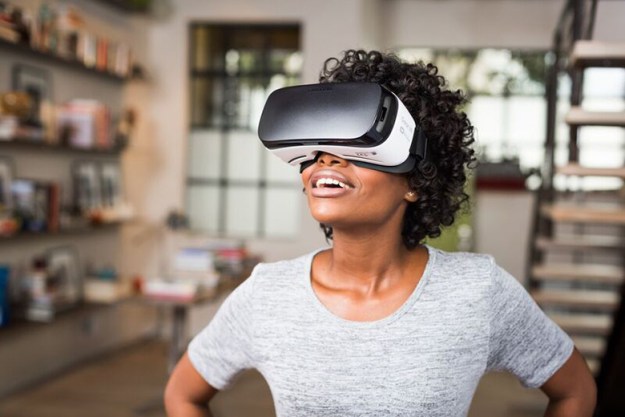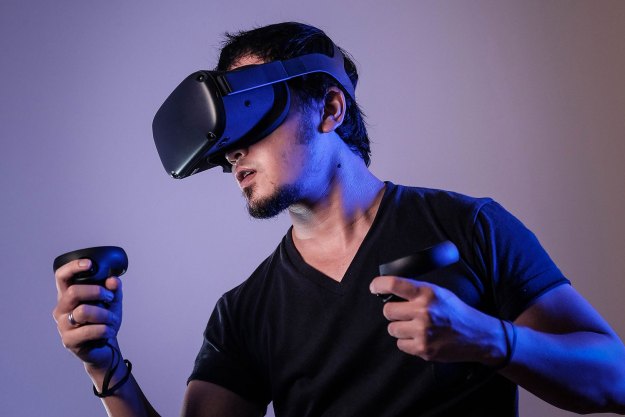ZTE isn’t letting Samsung, LG, and Huawei run away with the mobile virtual reality game. The Chinese company is preparing its own VR headset for launch internationally later this year. The headset will operate with the new Axon 7 smartphone, which is itself one of the first to be officially announced with support for Google’s Daydream VR system.
The unnamed ZTE VR headset looks like a smaller, chunkier version of the Gear VR.
It operates in a similar way to the Samsung Gear VR, where the Axon 7 plugs into the front of the headset to function as the screen, but it’s notable for having its own 9-axis gyroscope built in. ZTE says the sensors will minimize dizziness and cut down on VR-induced sickness. Additionally, the Axon 7’s Qualcomm Snapdragon 820 processor helps push the ZTE VR experience along swiftly, and the company says there’s only a 16.7ms delay time.
Made with a 5-piece optic set, the unnamed ZTE VR headset looks like a smaller, chunkier version of the Gear VR, but with a wider viewing aperture so anyone with glasses won’t always need to remove them to use it. There’s a focus wheel on top if that’s not the case. A set of controls are on the side, just like Gear VR, with a back button, a touchpad for navigation, and a volume control rocker. You can hold the headset in your hands — it’s actually very light — or wear it with straps around your head.
The device is already on sale in China, but ZTE intends to sell it internationally later this year, with a planned release date around the same time as Android N — the software version that will introduce Daydream to Android phones. The Axon 7 will also need
Because the headset is designed for use with the Axon 7, it has a USB Type-C connector, which means it won’t be backwards compatible with older Axon phones, regardless of whether they receive an Android N update or not. That said, the Axon 7 lends itself to immersive VR more than older phones anyway, thanks to the impressive audio performance, including Dolby Atmos support, and the super bright, 2,560 x 1,440 pixel AMOLED screen.
We tried out the headset in a very noisy, busy event environment, and the demo we saw was suitably impressive, but at this stage, it’s impossible to compare it to the Gear VR’s performance. However, it was beyond Google Cardboard in terms of comfort, and the Axon 7’s display looked brilliant. It’s possible ZTE will have more to say about the VR headset, and other supporting devices at the IFA technology show in September. We’ll keep you updated.
Editors' Recommendations
- The Apple Vision Pro has given VR its iPhone moment
- If iOS 17 is a letdown, you can blame this one Apple device
- Apple AR headset price just leaked, and it’s as expensive as you’d expect
- Apple is not ready to launch its AR/VR headset yet
- HTC aims to turn your carpool into a VR roller coaster






